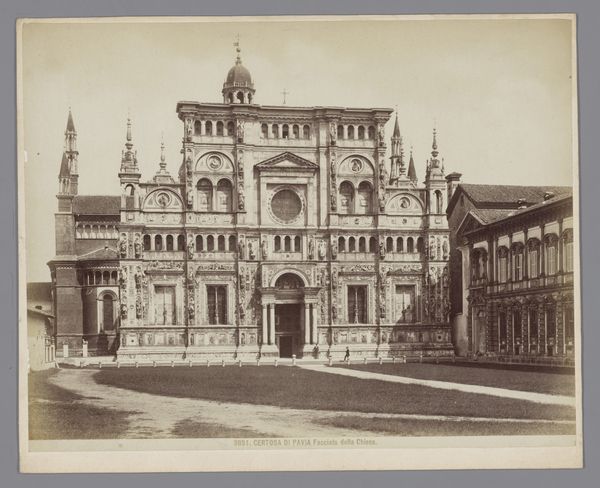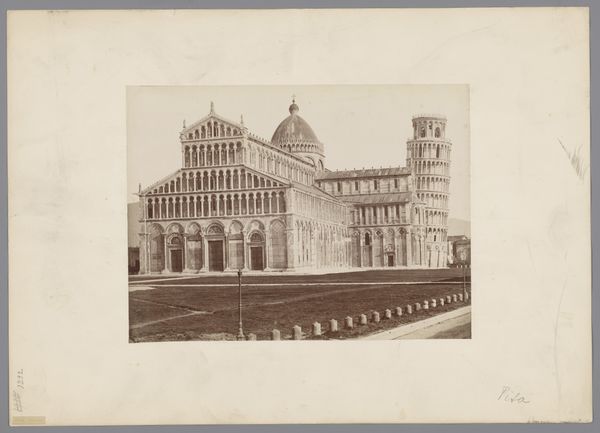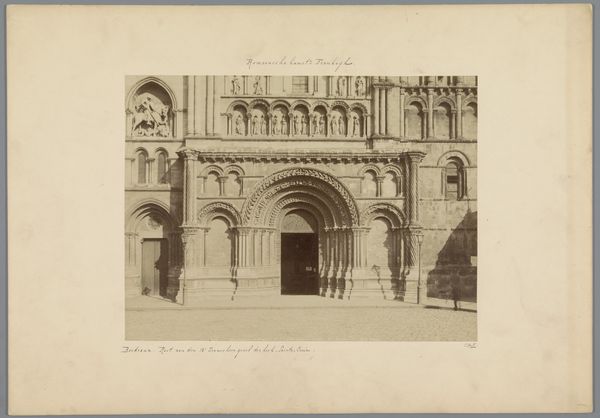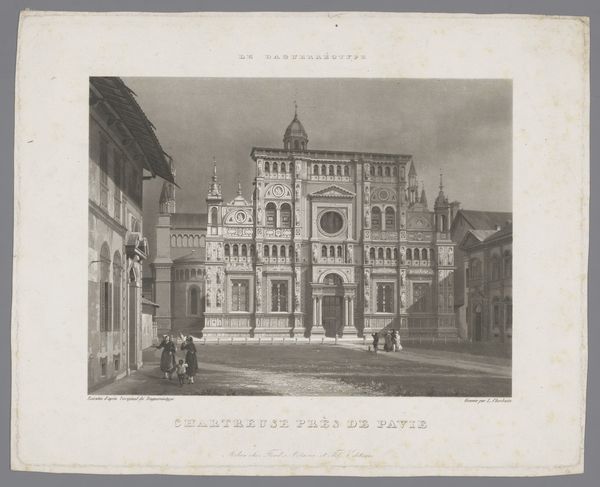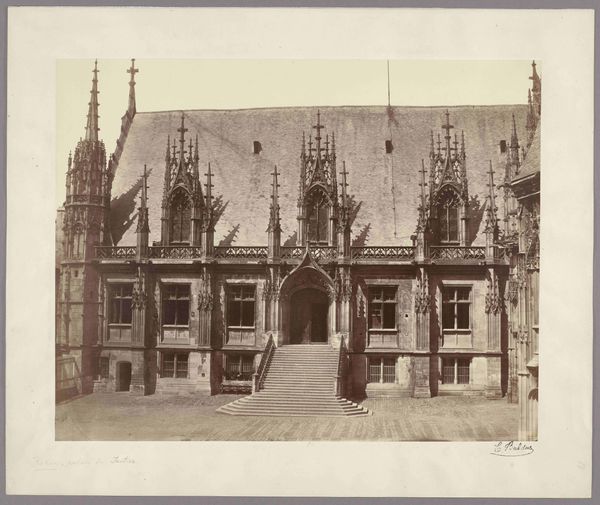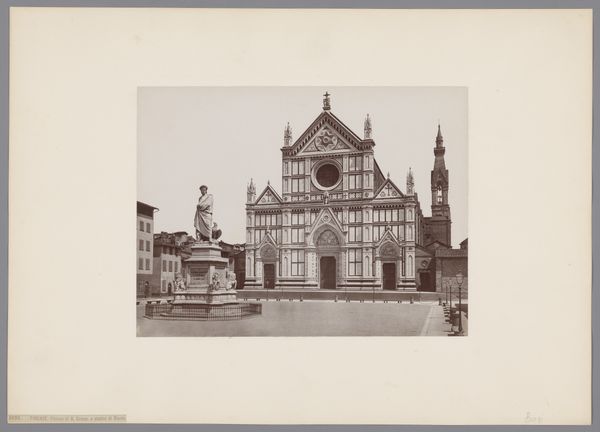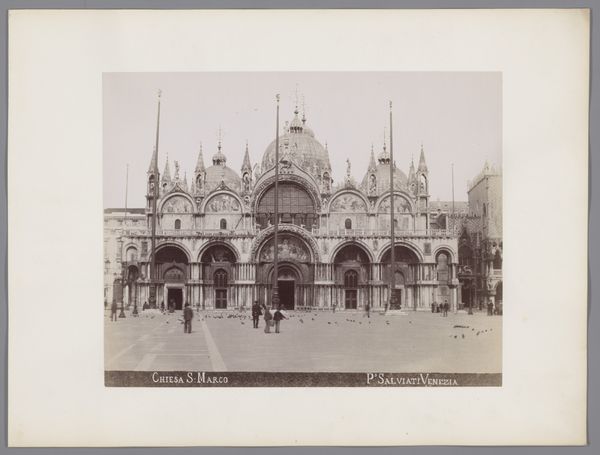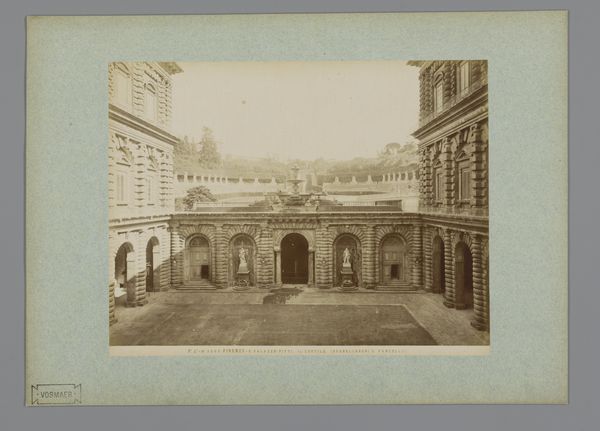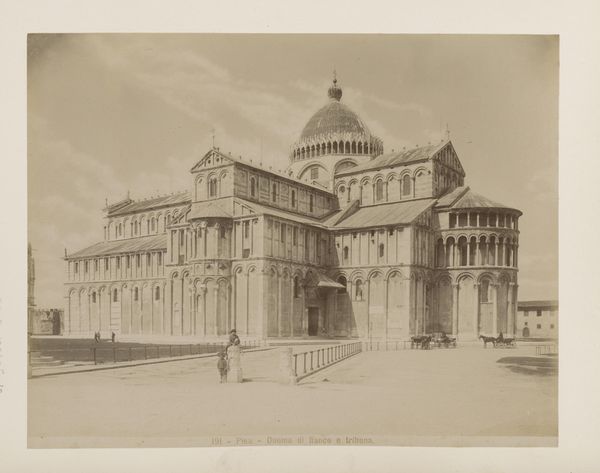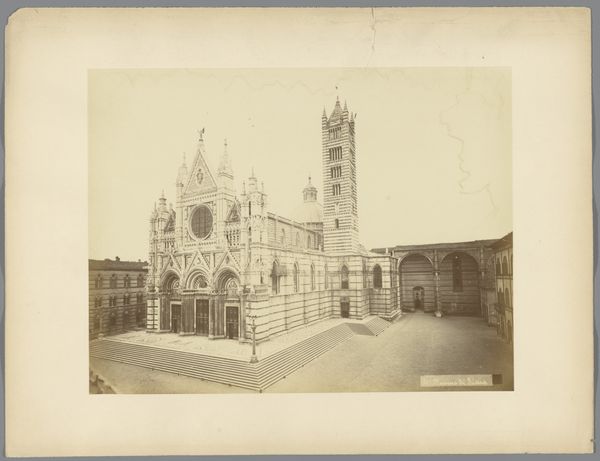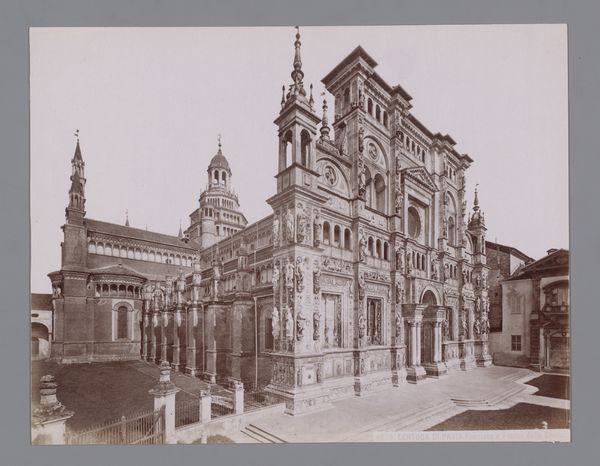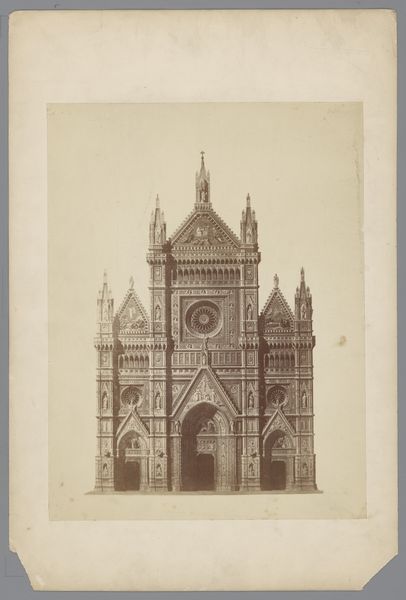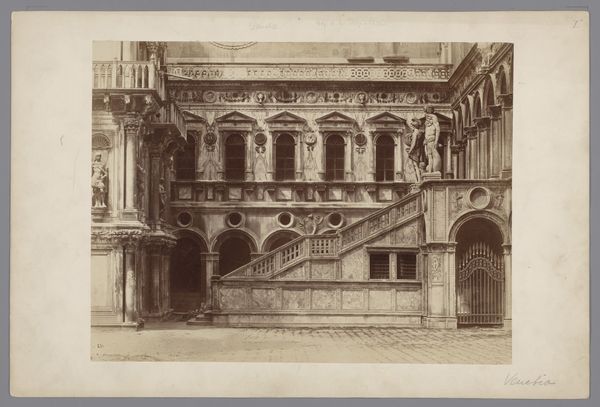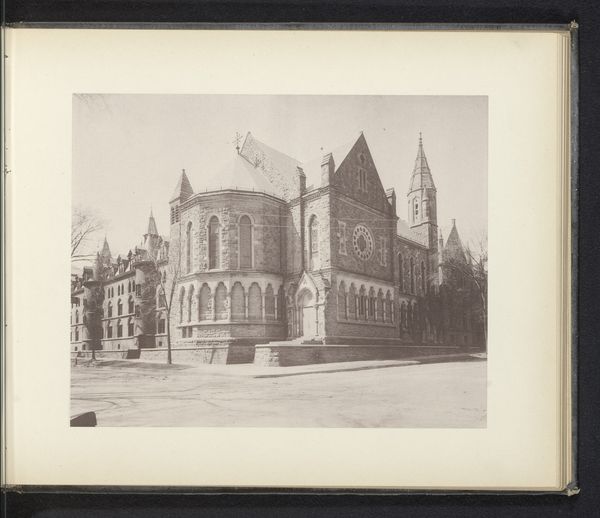
print, photography, albumen-print, architecture
# print
#
photography
#
cityscape
#
albumen-print
#
architecture
Dimensions: height 204 mm, width 254 mm, height 255 mm, width 356 mm
Copyright: Rijks Museum: Open Domain
Curator: Before us, we have an albumen print by Giacomo Brogi, titled "Façade van de kloosterkerk van Pavia," dating between 1864 and 1884. Editor: The sheer scale! It almost overwhelms the frame. All those elaborate details captured with such clarity—the perfect symmetry of the facade is quite powerful. Curator: Indeed. Brogi, in capturing the Certosa di Pavia, presents more than just a building; he presents a symbol of power and piety. Consider how photography, at the time, played a crucial role in documenting and disseminating architectural achievements, reinforcing certain cultural values. Editor: From a formal perspective, look at the way light models the architecture. It's distributed evenly across the frontage—an intentional aesthetic choice, creating a harmonious surface instead of deep contrasting shadows. This treatment adds to the monumental presence. Curator: That evenness, I think, is partially a product of the technical constraints of early photography, but also reflects the desire to create an objective record. It was a time when institutions, including the Church, were grappling with modernity and photography offered a tool to project authority. Editor: Do you think that a deeper contrast would disrupt this "objective" effect? Curator: It might introduce drama or perhaps a critical perspective, unsettling the established order implied by the structure. Brogi, though, it appears, used soft light as a tool to emphasize a sense of enduring, unassailable power. Editor: It’s like he carefully avoids expressing his own views by way of contrasting shadows—he acts like a stenographer whose sole objective is accurate record. Very curious approach. What I am impressed by is how all those geometric masses—the blocks, arches, squares, and curves—form such a cohesive structure. Curator: Right. The photograph itself is thus not merely a snapshot, but a meticulously crafted cultural artifact reflecting and shaping perceptions of institutions and history. Editor: Ultimately, both the photographic technique and the careful artistic choices work in synergy, don't they, contributing to how the artwork can still engage the viewers more than a century later? Curator: Absolutely, and this understanding highlights the crucial interplay between visual language, technology and the dynamics of societal influence when looking at art history.
Comments
No comments
Be the first to comment and join the conversation on the ultimate creative platform.
